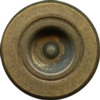i've seen a number of wi's that deal with small arms of ww2 and the cold war,
but none dealing with ww1
so,
wi:
russia, france, and great britain create a board of enquiry to standardize the caliber of their respective rifles and heavy machine guns
guide lines;
questions;(yes these questions are separate from each other for a reason, i do believe that the answer to each one of them could be different)
but none dealing with ww1
so,
wi:
russia, france, and great britain create a board of enquiry to standardize the caliber of their respective rifles and heavy machine guns
guide lines;
the board is looking for a full power rifle cartridge,
must be able to convince politicians and army brass of advantages
must use available cartridge tech
the only nations who get a say are russia, france, and great britain
please do remember that the decision is as much a political act as a martial act
must be able to convince politicians and army brass of advantages
must use available cartridge tech
the only nations who get a say are russia, france, and great britain
please do remember that the decision is as much a political act as a martial act
questions;(yes these questions are separate from each other for a reason, i do believe that the answer to each one of them could be different)
what is the best cartridge they can recommend?
what is the cartridge they are most likely to recommend?
what is the cartridge that the entente is most likely to adopt?
what is the immediate result?
what will be the effect on ww1 procurement?
what will be the post war effect?
what is the cartridge they are most likely to recommend?
what is the cartridge that the entente is most likely to adopt?
what is the immediate result?
what will be the effect on ww1 procurement?
what will be the post war effect?

